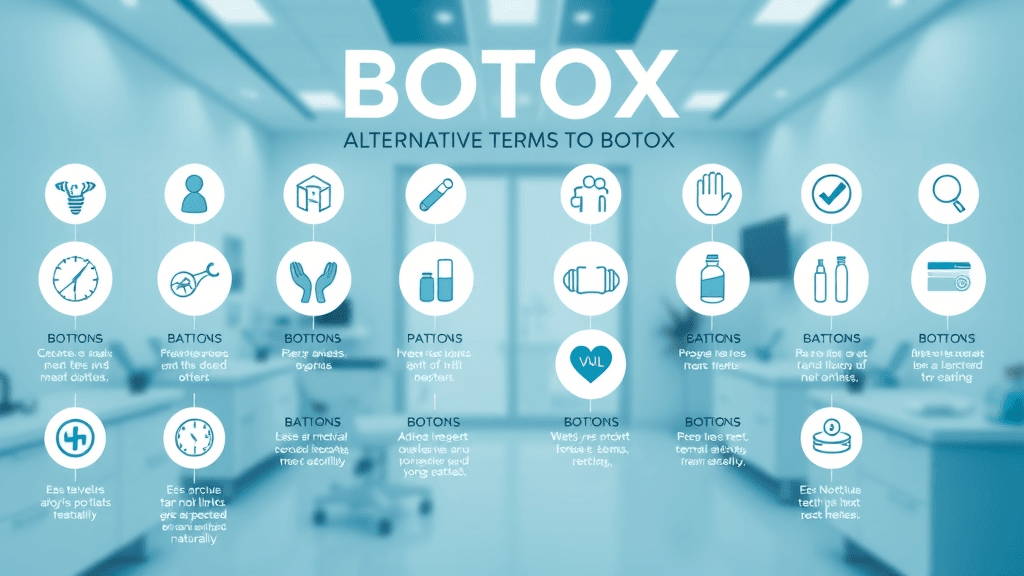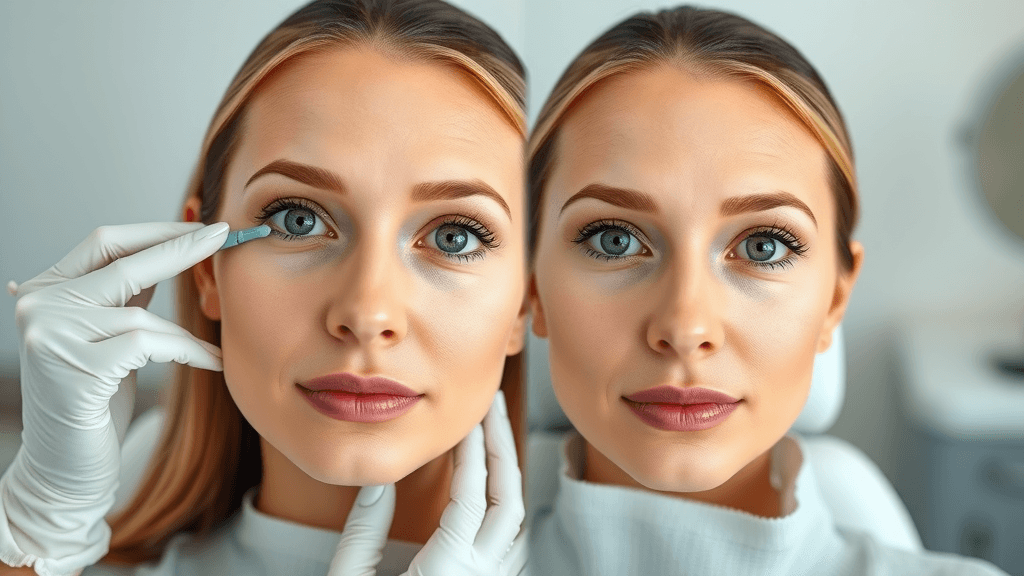Did you know that 76% of potential clients are influenced by industry-specific marketing language before booking a facial aesthetic treatment? That’s right—using the right botox marketing terms isn’t just industry jargon. It’s the difference between winning a client’s trust and missing the chance to attract new clients. In this comprehensive guide, we’ll break down the essential vocabulary every medspa owner or manager needs to confidently, ethically, and compliantly grow their botox business. Get ready to unmask the power of words in the booming botox market!
“76% of potential clients are influenced by industry-specific marketing language before booking a facial aesthetic treatment. Decoding these terms can set your practice apart.”
Unpacking the Language: Why Understanding Botox Marketing Terms Matters
Today’s medspa industry is more competitive than ever, and botox marketing terms have rapidly become a powerful tool for distinguishing one practice from another. Whether you’re navigating the growing botox market or crafting your next botox ad, the words you use matter. Potential clients are becoming more informed, often researching their options online and on social media long before making an appointment. As a result, the effectiveness of your marketing and advertising relies heavily on language that is precise, compliant, and resonates with your target audience.
Failing to understand or incorrectly using botox marketing terms can lead to more than just confusion—it can undermine trust, cause compliance issues with the advertising standards authority, and even expose your practice to penalties. On the flip side, mastering the right terminology gives you a distinct edge in both online marketing and client communication. Whether it’s highlighting your expertise in facial aesthetics or describing your use of approved botulinum toxin products, every word needs to inform, reassure, and align with consumer expectations. Let’s explore exactly how these words shape your business strategies.
How Botox Marketing Terms Influence the Botox Market and Social Media Strategies
The influence of botox marketing terms goes far beyond printed brochures or clinic websites. In today’s digital world, social media platforms like Instagram and Facebook have become top choices for advertising botox treatments and building brand reputation. A well-crafted botox ad—using compliant, clear terms—can reach thousands of potential clients in your local area. However, incorrect or misleading language can quickly get your ads removed or even result in account bans.
Social media isn’t just about pretty photos; it’s built on trust, credibility, and compliance. Clients are increasingly aware of regulations, and they’re wary of exaggerated claims or “too good to be true” before-and-after shots. Using the right botox marketing terms ensures that your messages are not only attractive but also clear, legal, and educational. This builds the solid reputation needed to stand out in the highly competitive botox market, attract new patients, and boost engagement across campaigns.
- Increase in botox market competition
- Impact on client trust and credibility
- Role in crafting effective social media campaigns

What You’ll Learn in This Botox Marketing Terms Guide
This guide is designed to help medspa owners and managers like you confidently navigate the jargon-heavy world of botox marketing and advertising. By the end of this guide, you will have a clear understanding of the most important terms, learn how to use them on social media while staying compliant, and avoid common advertising pitfalls. Our goal is to empower you with both the knowledge and practical strategies necessary to elevate your practice while safeguarding your credibility.
- Clear definitions of key botox marketing terms
- How to use social media for compliant advertising botox campaigns
- Avoiding the pitfalls of misleading botox advertising
- Understanding regulations set by the advertising standards authority
Essentials of Botox Marketing Terms Every Medspa Should Know
To successfully market your botox services and attract new clients, you must be fluent in the vocabulary surrounding botulinum toxin products, facial aesthetic solutions, and industry-specific ad language. Knowing the nuances between terms like “botulinum toxin,” “facial aesthetics,” and specific brand names (such as Botox, Dysport, and Xeomin) is key to creating compliant, effective marketing campaigns.

Common Botox Marketing Terms: From Botulinum Toxin to Brand Names
Understanding the difference between terms is not just about accuracy—it’s about following regulations and building trust. “Botulinum toxin” refers to the active ingredient in several FDA-approved products—while “Botox” is a popular brand name. “Facial aesthetic” or “facial aesthetics” refers to the overall enhancement of facial appearance, moving beyond just wrinkle treatment. Social proof, such as positive client reviews or visual testimonials, can add powerful credibility. Meanwhile, before-and-after imagery and brand names help provide context for your services, but they must be used responsibly.
- Botulinum toxin
- Facial aesthetic vs facial aesthetics
- Social proof
- Before-and-after imagery
- Botulinum toxin brand names (Botox, Dysport, Xeomin)
| Term | Meaning | Best-Use Scenario |
|---|---|---|
| Botulinum Toxin | The medical term for the ingredient used in botox treatments and other wrinkle relaxers. | Use in educational content; required in legal disclaimers; never misleadingly used as a brand substitute. |
| Facial Aesthetic(s) | Describes holistic treatment approaches designed to enhance facial harmony, not just eliminate fine lines. | Include in service descriptions and patient education for broader appeal. |
| Social Proof | Testimonials, reviews, or posts that show client satisfaction and real-world outcomes. | Share on your website or social media to build trust and credibility. |
| Before-and-After Imagery | Visual evidence of results—must be genuine, unaltered, and compliant with advertising standards. | Carefully curate for use on social media, website, and ads with appropriate consent. |
| Brand Names (Botox, Dysport, Xeomin) | Specific FDA-approved brands of botulinum toxin products. | Use accurately in context; avoid casual or generic use of “Botox” for all toxin products. |
The Botox Market: Trends and Marketing Strategies
The botox market has changed dramatically thanks to digital advances, increased competition, and shifting consumer preferences. Understanding current trends—including how social media shapes consumer perceptions and the growing preference for non-surgical facial aesthetic solutions—will help you align your marketing strategies for maximum impact. The global botox market is expected to soar, so it’s essential to adapt quickly and position your practice at the forefront of these changes.
Botox Market Growth and Consumer Perceptions
Botox treatments are now mainstream, with clients demanding natural, discrete enhancements and expecting safe, professional care. The rise of influencer culture, targeted online marketing, and user-generated content has pushed medspas to be more creative and data-driven. Insightful reviews and authentic storytelling can sway undecided potential clients, while social media presence shapes your authority in the market.
- Shifts in social media influences
- Demand for non-surgical facial aesthetic solutions
- Data-driven insights on botox treatments market share
“The global botox market value is projected to reach $6 billion by 2028 — fueled by dynamic marketing and advertising efforts.”

Navigating Social Media and Botox Advertising Standards
Advertising botox services on social media isn’t as straightforward as it seems. Every platform has restrictions, and ads must follow strict advertising standards to remain compliant and reach their audiences. The Advertising Standards Authority and the CAP Code (Committee of Advertising Practice) set clear boundaries around what claims can be made, how products are presented, and what can be advertised to the public. Medspa owners must stay up to date with these rules to avoid penalties and ensure advertisements truly benefit their practice.
How to Advertise Botox on Social Media and Stay Compliant
To run a successful and legal botox ad, you must follow both platform guidelines and national advertising regulations. Instagram and Facebook, for example, ban certain references to botox treatments and brand names in ads, especially when advertised directly to the public. Always avoid prohibited language such as “miracle results” or “instant wrinkle cure,” and never offer free treatments as incentives.
Instead, focus on educational content about facial aesthetic options, highlight practitioner credentials, and show real (but subtle) before-and-after images. The Advertising Standards Authority continually updates guidance—so it’s crucial to stay informed and review their official channels before launching a new marketing campaign. Relying on compliant terminology and best practices will help protect your brand and attract new clients who value honesty and professionalism.
- Social media platform restrictions
- Avoiding prohibited botox ad language
- The role of the Advertising Standards Authority

Best Practices for Botulinum Toxin and Facial Aesthetic Advertising
Creating effective and compliant ads for botulinum toxin products means balancing educational value, professionalism, and regulatory adherence. Highlight facial aesthetics by focusing on safety, credentials, and realistic results—not guarantees. Avoid any statements that overpromise or imply prescription treatments are simple, risk-free solutions.
The most persuasive ads use compliant visuals, reference facial aesthetics, and feature genuine testimonials. Where possible, clarify that botulinum toxin is a prescription-only medicine and cannot be advertised directly to the public for cosmetic purposes. By following these rules, your practice earns client trust, protects its reputation, and maintains long-term success in the fast-evolving botox treatment market.
- Do’s and Don’ts for advertising botox
- Compliant terminology vs banned claims
- Leveraging visuals for authority without misleading
| Platform | Compliance Requirements | Key Advertising Regulations |
|---|---|---|
| Facebook/Instagram | No direct promotion of botox treatments; educational, generic, and compliant terms; medical credentials visible. | Cannot offer free treatments as incentives; avoid direct calls to action for booking botox; no exaggerated claims. |
| Google Ads | Restricted to certified advertisers; no prescription product promotion to the public; strict review of ad content. | Follow local laws and the CAP code; use alternative terms for botox treatments; provide disclaimers about prescription-only status. |
| TikTok/Other | Highly restrictive; ads featuring injectable treatments often banned entirely. | Avoid before-and-after imagery or direct brand name promotion; focus on educational content. |
People Also Ask: Key Questions About Botox Marketing Terms
How to Advertise for Botox?
When advertising botox services, use language that focuses on the broader umbrella of facial aesthetics or facial aesthetic treatments. Educate clients about their options, clearly set realistic expectations, and highlight the safety and professionalism of your practice. Avoid making promises about results, and follow all advertising protocols set by the Advertising Standards Authority and platform-specific guidelines. Building trust and authority through transparency is more effective than flashy claims.
- Use compliant language focusing on facial aesthetics
- Educate instead of promise results
- Promote professionalism and safety

What is the 4 Hour Rule for Botox?
The “4 hour rule” refers to the advice given to botox treatment clients: avoid lying down, applying pressure, or massaging the treated area for four hours after injection. Sharing these tips in your aftercare instructions—and even in your marketing—shows your expertise and commitment to client safety. Consistently reinforcing aftercare guidance not only prevents complications but also reassures potential clients that your medspa prioritizes best practices.
- Advising clients to avoid lying down or massaging the area for at least four hours after botox treatment
- Importance for marketing botox aftercare to reinforce expertise

Why are Gen Z Saying No to Botox?
Recent trends show that many Gen Z clients are skeptical about traditional botox treatments. This group often favors natural facial aesthetic methods and is highly influenced by social media authenticity movements. They’re drawn to practitioners who offer honest, educational content and prioritize wellness over perfection. In your marketing, consider spotlighting alternative treatment options or non-invasive approaches to meet this demand.
- Growing preference for natural facial aesthetic treatments
- Impact of current social media trends and authenticity-focused content
What Can I Say Instead of Botox?
When regulations require you to avoid the word “Botox” in public marketing materials, use alternative terms like “neuromodulator,” “botulinum toxin type A,” or “injectable wrinkle relaxers.” These compliant terms still convey the treatment’s benefits while adhering to advertising standards and protecting your practice from accidental breaches.
- Alternative botox marketing terms: ‘neuromodulator’, ‘botulinum toxin type A’, ‘injectable wrinkle relaxers’

Decoding Regulations: Botox Advertising and the Law
Medspa owners and managers must stay up to date with advertising laws and the expectations set by the Advertising Standards Authority (ASA). Using inaccurate or misleading botox marketing terms—even unintentionally—can result in warnings, fines, or reputational harm. That’s why understanding legal requirements and implementing regular compliance checks are crucial steps in your advertising process.
Role of the Advertising Standards Authority in Botox Marketing Terms
The ASA oversees guidelines that safeguard the public from misleading advertisements related to prescription products like botox. To ensure your ads are legal, always use scientifically accurate descriptions, provide disclaimers about prescription status, and avoid exaggerating claims about botox treatments. Stay current by reviewing the ASA’s evolving guidance, engaging with a legal advisor, and regularly reviewing your marketing materials for compliance.
- Current advertising standards
- How to ensure your botox advertising is legal and ethical
“Misleading botox advertising can lead to fines and reputation damage. Stay current with the advertising standards authority’s guidance.”
Crafting Effective Botox Ads: From Messaging to Visuals
The most effective botox ad balances professionalism, compliance, and creativity. Highlight facial aesthetic improvements with real-world before-and-after examples, share practitioner credentials, and use storytelling to make your practice relatable. Always use compliant language, never overpromise, and showcase results that set realistic expectations—this approach fosters trust and attracts new clients interested in botox treatments for facial aesthetics.
Constructing a Persuasive Botox Ad Without Overpromising
Showcasing your expertise through before-and-after imagery, patient testimonials, and practitioner qualifications can make your botox marketing stand out—so long as claims remain realistic. Avoid “miracle” claims or suggesting guaranteed results. Instead, use stories that highlight your client’s journey and satisfaction, providing a window into the professionalism and care patients can expect at your medspa.
- Realistic claims and before-and-after examples
- Incorporating facial aesthetic credentials
- Power of storytelling in botox marketing

- Case studies from leading botox marketing campaigns
- Analysis of successful and unsuccessful botox ads
Lists: The Dos and Don’ts of Botox Marketing Terms
- Do use medically accurate botox marketing terms.
- Do reference facial aesthetics in educational content.
- Don’t make unsubstantiated claims about botox treatments or the botulinum toxin.
- Don’t ignore advertising standards.
FAQs: Quick Answers on Botox Marketing Terms
- What are the most common botox marketing terms? Terms like botulinum toxin, facial aesthetics, wrinkle relaxers, and specific brand names (Botox, Dysport, Xeomin).
- Is using the word ‘Botox’ allowed in all types of advertising? No, it is often restricted, especially for advertising to the public; always check current standards authority guidance.
- How can I stay informed on changes in botox market regulations? Regularly review the Advertising Standards Authority website, join industry groups, and network with compliant marketing professionals.
Key Takeaways: Mastering Botox Marketing Terms for Your Practice
- Use precise botox marketing language to attract and build trust.
- Comply with advertising standards authority guidelines.
- Adapt social media messaging for evolving trends in the botox market.
Conclusion: Elevate Your Medspa with Expertly Applied Botox Marketing Terms
“The right words can transform your practice’s growth trajectory. Commit to ethical, clear, and effective botox marketing terms in every client touchpoint.”
Understanding the nuances of botox marketing terms is crucial for medspa owners aiming to navigate the competitive landscape effectively. The article “Botox Advertising: What UK Practitioners Need to Know” provides comprehensive insights into the Advertising Standards Authority’s (ASA) regulations, emphasizing the prohibition of direct references to botulinum toxin products in advertising materials. (smileworks-hub.co.uk) Additionally, “How to Advertise Botox: The Dos and Don’ts” outlines practical strategies for promoting services without breaching advertising standards, such as focusing on educational content and avoiding persuasive language. (dental-design.marketing) By adhering to these guidelines, medspa owners can ensure their marketing efforts are both effective and compliant.







